One sentence, ‘Good evening and welcome to television’, marked the commencement of regular television transmission in Australia. But it was a long journey before Mr Gyngell could say those historic words on 16 September 1956.

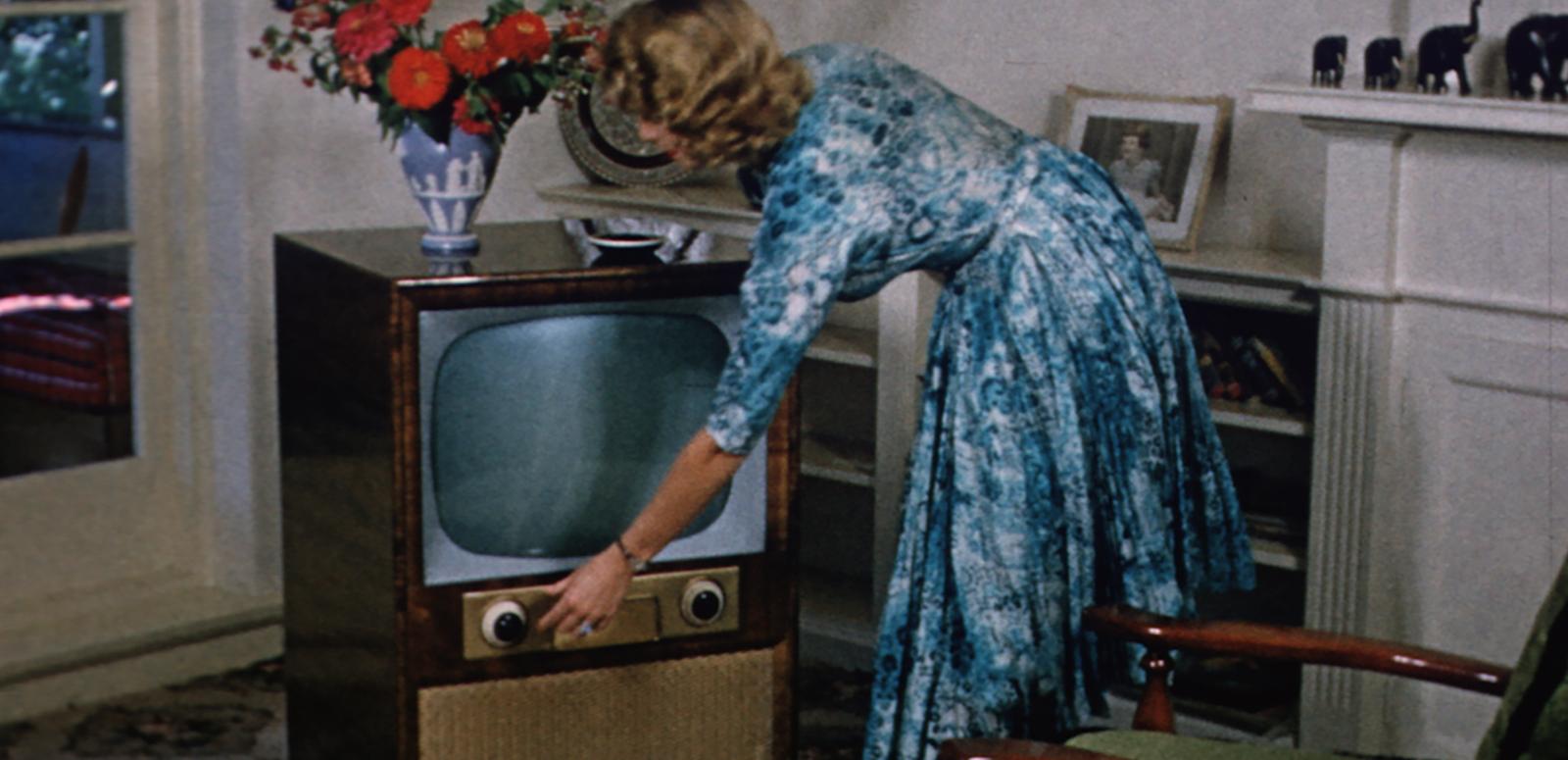
One sentence, ‘Good evening and welcome to television’, marked the commencement of regular television transmission in Australia. But it was a long journey before Mr Gyngell could say those historic words on 16 September 1956.
A re-creation of Bruce Gyngell’s welcome to television. Courtesy: Nine Network.
Our country was a late entrant compared to the United Kingdom and the United States, both of which had commenced television services by the outbreak of the Second World War. In Australia delays were the order of the day.
The Gibson Committee Report in 1942 found that 'much development is necessary before its introduction should be authorised’. Ten years later, Postmaster-General HL Anthony announced that TV’s introduction would again be delayed.
Eventually the range of views were given expression through the Royal Commission into Television, instituted by Prime Minister Sir Robert Menzies on 17 January 1953. There were concerns about the cost of television, technical issues, its perceived impact – both positive and negative, as well as what system should be selected and who should be awarded the TV licences. The royal commission’s final report was given to the federal government on 20 February 1954 and the recommendations included:
In 1998, Brendan Horgan interviewed Bruce Gyngell for the NFSA’S Radio With Pictures project. Gyngell recalled that everything started at a swimming party at the Packers. Aged 22, he was working as a disc jockey for the Australian Broadcasting Corporation.
'Frank Packer came up to me and said, "You’re that announcer fella, aren’t you? I’m going to apply for a television licence, which I’ll probably get. Maybe I need people with radio experience." I think his basic view was "I’m not quite sure whether television is going to work, but everyone says I should be in it". It was largely regarded as an insurance policy, something he should invest in.'
When Television Corporation Ltd, headed by Packer, received one of the first four licences for commercial stations, Gyngell decided to take the initiative. He wrote letters to the four US television networks (ABC, CBS, NBC and DuMont) and several universities (Columbia, Harvard, Yale and Stanford):
'I rather naively wrote … that our company had been awarded the first TV licence in Australia, and asking what training they could extend to me and my staff. Only one responded, Sylvester L Weaver Jr, president of NBC.'
Gyngell also applied for an American student visa, a round-the-world ticket and an exchange control allowance of $100 a week. Once everything was confirmed, he wrote to Mr Packer.
Dear Mr Packer... I’ve been emboldened enough to make arrangements, and I can go to NBC and do a course at Columbia University. May I go?
'I wrote: "Dear Mr Packer, on the 14th of February you did mention at that party that you’d be interested in having people with radio experience, and realising you must be terribly busy, I’ve been emboldened enough to make arrangements, and I can go to NBC and do a course at Columbia University. May I go?" His secretary said "Yes", but I had to take Alex Baz with me, and pick up Mike Ramsden, correspondent at the White House, in New York.'
The trio undertook a three-month course at Columbia, sponsored by NBC. They then took on-the-job training at WEWS, in Cleveland, Ohio. There they were able to do a 'bit of everything’: they were editors, camera operators and floor managers. Bruce learnt about the issues of televising entertainment and general programming, while Alex concentrated on the televising of American football and Mike focused on news. They had then planned to go to Britain where commercial television had just been introduced. However, Sir Frank Packer had other thoughts"
'He said, "The Poms don’t know how to do it, come home. I don’t want you contaminated." So we went home.'
On return to Australia, Bruce found that TCN9’s regular transmission was still some months away, so he again convinced Packer to allow him to undertake further training, this time at KGMB in Honolulu.
'I learnt more during that period than I had learnt previously, because I actually came across the practical problems of, "My god the copy is late" or, what are you going to do when a guest hasn’t turned up.'
The following clip contains highlights from the interview with Gyngell:
Bruce Gyngell, interviewed by Brendan Horgan in 1998. NFSA title: 382977
A month before launch Bruce came back to Australia and he, Baz and Ramsden began planning for opening night in their respective roles as TCN9’s program director, station manager and news director.
Gyngell’s famous words, 'Good evening and welcome to television’, finally launched the new medium at 7 pm on 16 September 1956. Anecdotally, this surviving footage is understood to have been recreated in the following year, for TCN9 Sydney’s first anniversary special.
The copy of TCN9’s opening night log is one of the most significant television documents held in the NFSA collection. In the absence of a complete recording of TCN9’s opening night, this log details the programs and advertisements broadcast on that first night, and the two locations they used: St David’s Hall in Surry Hills and TCN9 Willoughby:
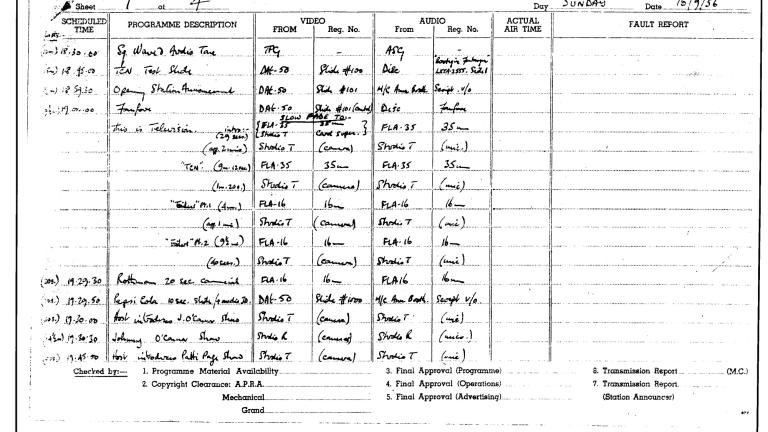
TCN 9 Daily Program Master Log page 1, Sunday 16 September 1956. Courtesy: Nine Network. NFSA title: 1482621
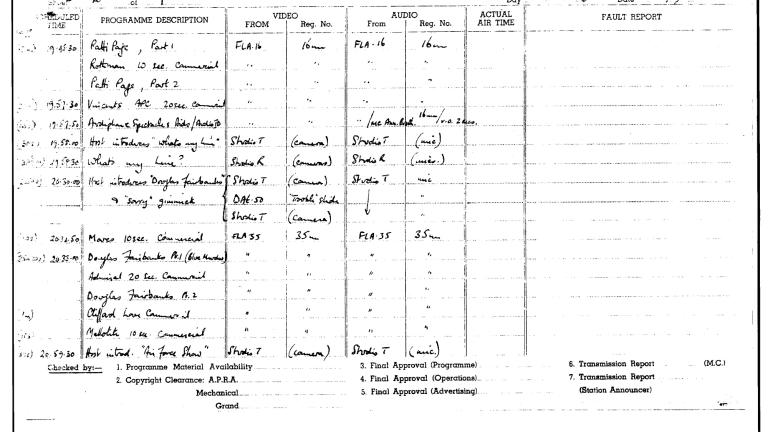
TCN 9 Daily Program Master Log page 2, Sunday 16 September 1956. Courtesy: Nine Network. NFSA title: 1482621
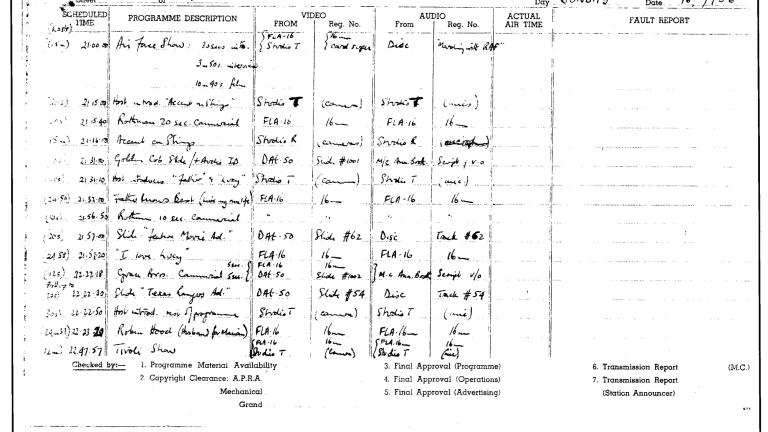
TCN 9 Daily Program Master Log page 3, Sunday 16 September 1956. Courtesy: Nine Network. NFSA title: 1482621
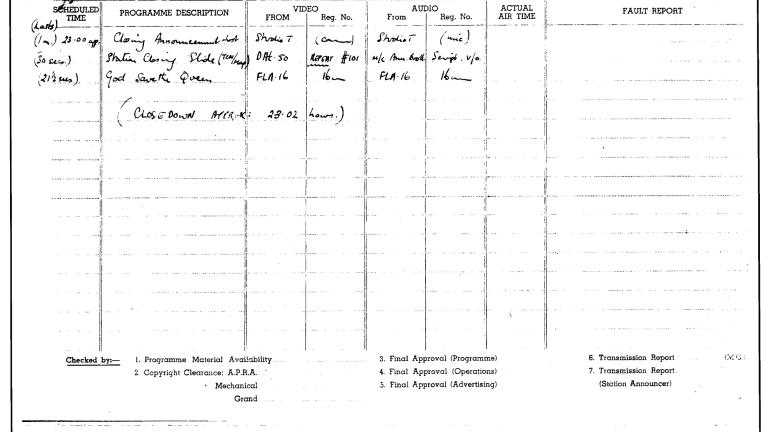
TCN 9 Daily Program Master Log page 4, Sunday 16 September 1956. Courtesy: Nine Network. NFSA title: 1482621
The Broadcasting and Television Journal (now B&T magazine) was launched on 15 September 1950:
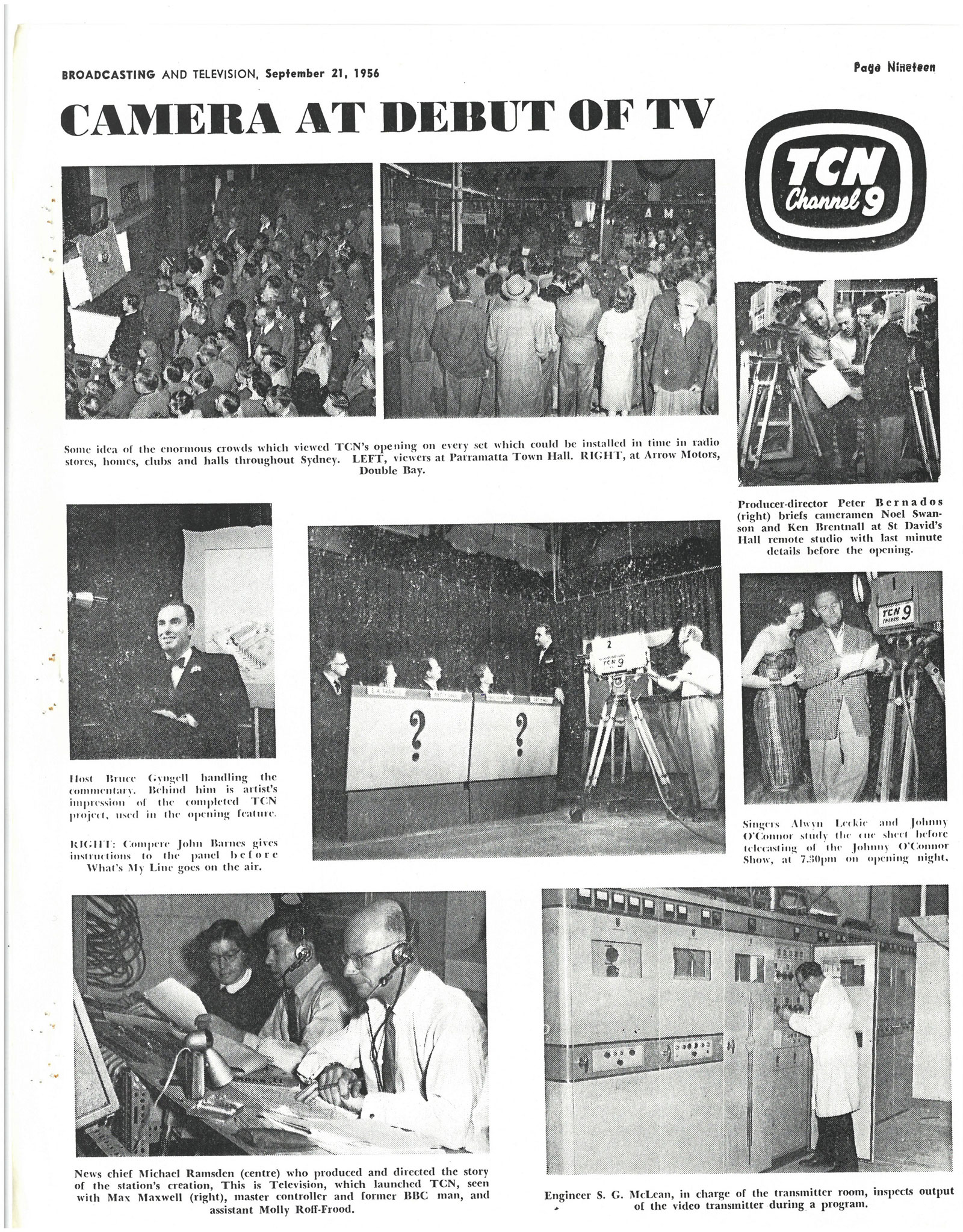
The 21 September 1956 edition included a special devoted to TCN9’s launch, titled ‘The Camera at Debut of TV’. This article gives us actual pictorial evidence of the historic night (click on the image to view a larger version).
The edition is also significant for its articles and photos on the construction of TCN9 studios and transmitter.
With thanks to the Nine Network and Peter Cox.
This article was first published in 2016. The text was updated in 2023.
Want to be the first to hear stories and news from the NFSA?
Subscribe to our newsletter and never miss out.
The National Film and Sound Archive of Australia acknowledges Australia’s Aboriginal and Torres Strait Islander peoples as the Traditional Custodians of the land on which we work and live and gives respect to their Elders both past and present.